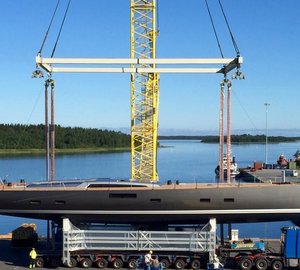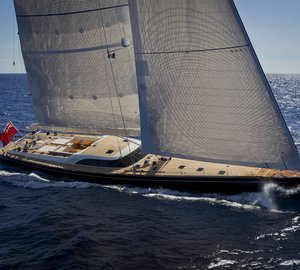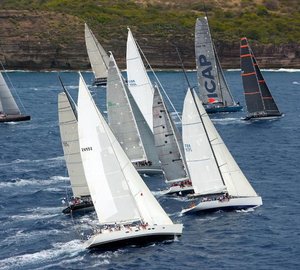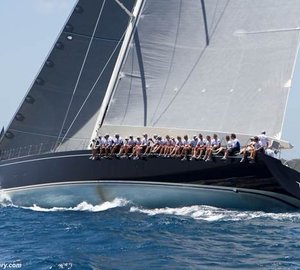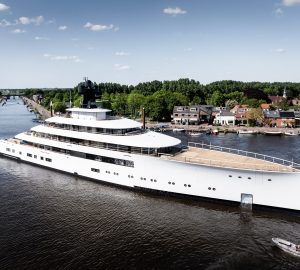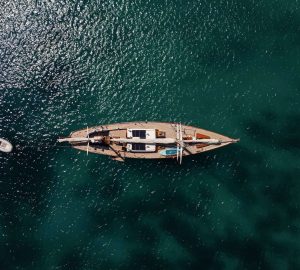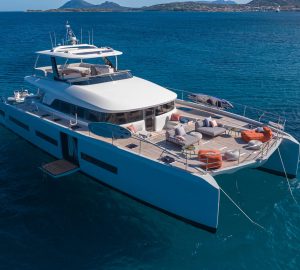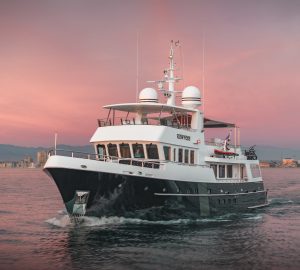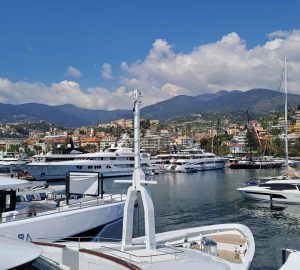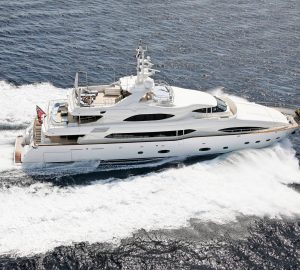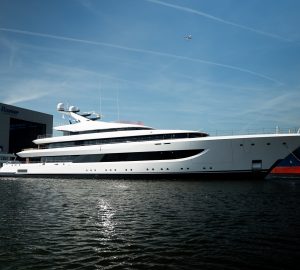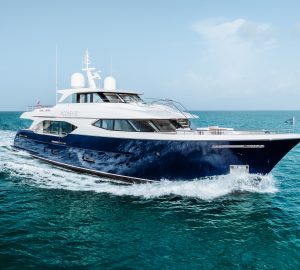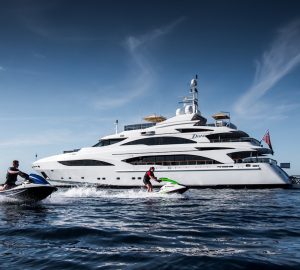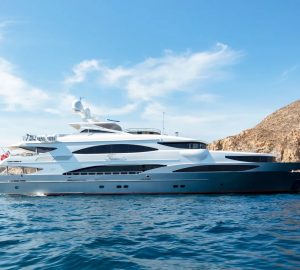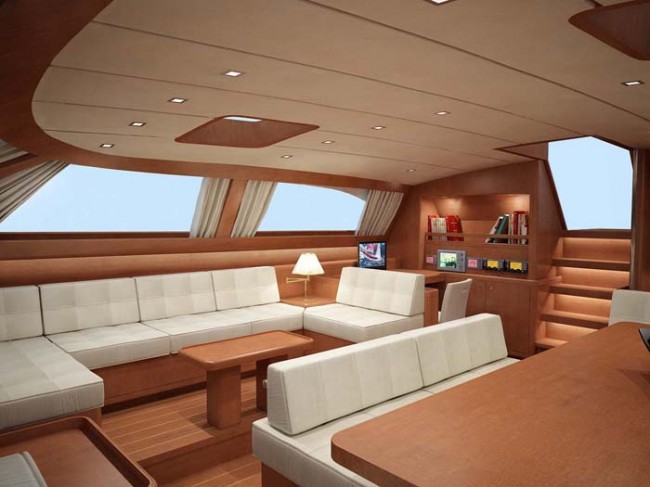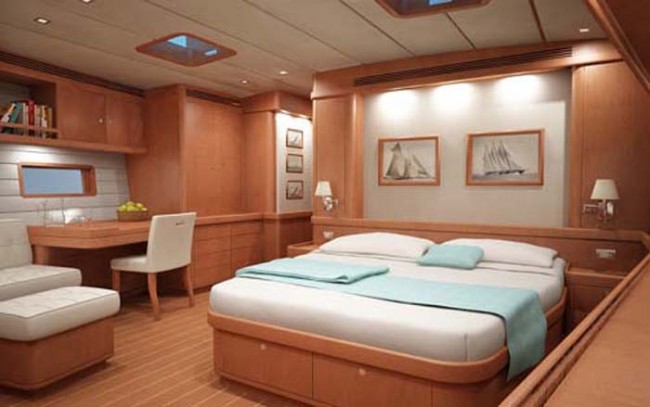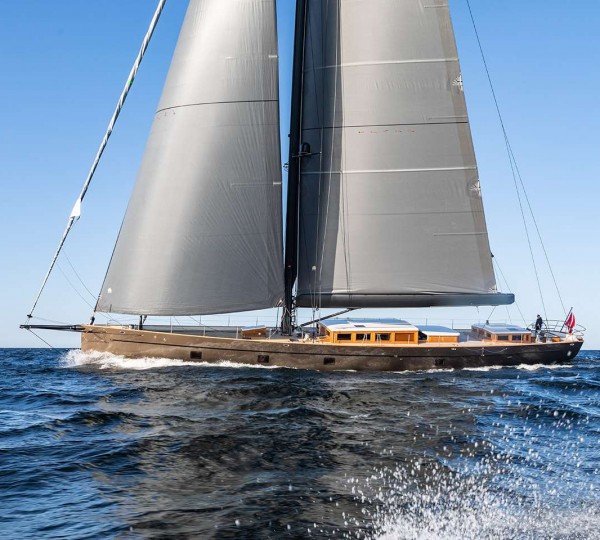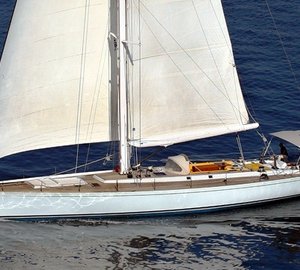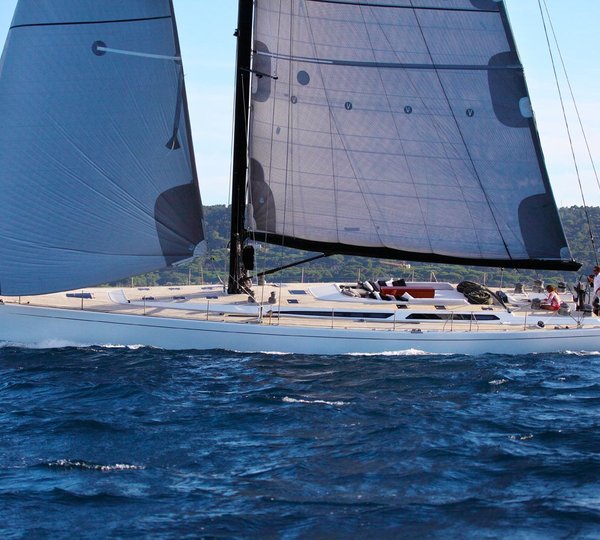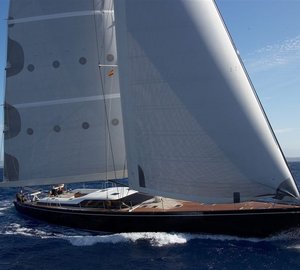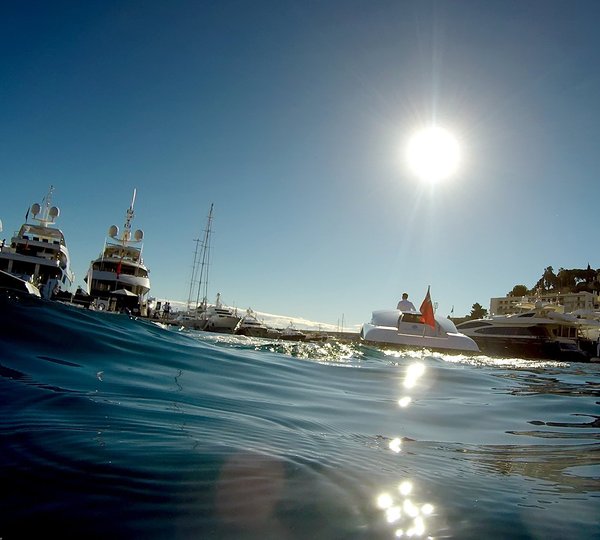The 34 metre super sailing yacht Nilaya has been launched by Baltic Yachts in Finland. On the third of May Finnish yard Baltic Yachts launched the 34.14m sailing yacht Nilaya from their Jakobstad facility. The result of a collaboration between Baltic Yachts, Nauta Yacht Design and Reichel Pugh Yacht Design, the Baltic 112 sailing yacht Nilaya is a superyacht that can deliver high sailing performance for her size with all the pedigree of a stripped-out racer. According to Baltic: “When high performance is high on the priorities, carbon fibre pre-preg composite construction is the obvious way to go.”
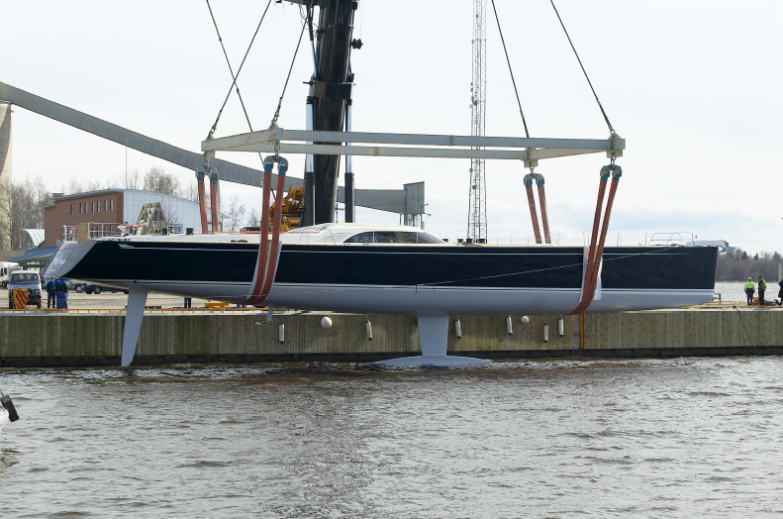 Nauta Yacht Design was responsible for the general arrangement a and yacht design lines of luxury yacht Nilaya whilst her naval architecture is the work of Reichel Pugh Yacht Design – the two design houses already have a strong collaboration, having worked together historically on the design of high performance cruiser racers. Yacht Nilaya was the inaugural collaboration between Baltic Yachts and Nauta Yacht Design.
Nauta Yacht Design was responsible for the general arrangement a and yacht design lines of luxury yacht Nilaya whilst her naval architecture is the work of Reichel Pugh Yacht Design – the two design houses already have a strong collaboration, having worked together historically on the design of high performance cruiser racers. Yacht Nilaya was the inaugural collaboration between Baltic Yachts and Nauta Yacht Design.
On the partnership, Baltic’s Managing Director Kenneth Nyfelt and Nauta’s CEO issued the statement, ” It has been a real pleasure working together during the three year build period. Also influential in the build process was Nigel Ingram of Marine Construction Management who worked closely on the project management of Nilaya.”
With a displacement of just 90T, Nilaya incorporates a lifting keel which is capable of reducing her maximum draft to 3.5metres from 5.5metres, allowing her to enjoy shallower moorings and cruising grounds.
In addition to this sailing yacht Nilaya offers internal space equal to that of yachts of a higher LOA; featuring a deck house with all-round view, a large owner’s cabin and four large guest cabins. Crew are housed within three cabins in addition to the Captain’s double cabin and she boasts a spacious galley. Much attention has been paid to detail, resulting in a simple, synthetic yet timeless style across all aspects of the yacht. Following her completion she will be exhibited at the 2010 Monaco Yacht Show in September.
There are a handful of Baltic sailing yachts currently available for charter.
The Baltic Yachts superyachts under construction at the Baltic Yachts yard currently include the 66.8m ketch Panamax due 2011, the 51m Baltic 170 sloop, due 2014, and another Baltic 112, due 2011. Here is a link to the Baltic Yachts launched to date.
More information about the Baltic 112 and sailing yacht Nilaya
The Baltic 112 Custom designed by Reichel-Pugh is set to be one of the most high-performance sailing boats of its size. The owner of this ambitious boat has a strong background in racing, so it was inevitable that he would want a superyacht that could deliver high performance with all the pedigree of a stripped-out racer.
When high performance is high on the priorities, carbon-fibre composite construction is the obvious way to go. However, for all but the most uncompromising of race boats, some element of noise reduction is essential to help mask the worst of those unwanted noises, especially when the engine is running.
Baltic has faced this dilemma many times before in previous projects. Performance versus sound insulation is a common challenge in superyacht construction, but the noise reduction requirements on the Baltic 112 RPN project were particularly demanding. So Baltic Yachts called in some leading marine noise reduction experts from the Netherlands.
Project Manager Pekka Laurila says this project has involved finite element analysis to predict vibrations, and that they have drawn on the experience of the luxury motor yacht industry where engine noise creates all kinds of noise reduction challenges.
However, motor yachts tend to have more space available for installing noise insulation, points out Laurila. That’s a luxury that’s not available in this project. “Spare space is in very short supply on Baltic 112 RPN. The freeboard height is low, so there’s not much room below the floor boards, and not much height above the ceiling. In the aft areas of the hull it will be a challenge to put in much noise-reducing material, where the bilge is non-existent, and there is just 20mm gap between the floorboards and the hull.”
Whereas many motor yacht projects might specify 300mm of noise insulation thickness, that was never an option with the Baltic 112 RPN, where the isolation thickness has been specified at 30-40mm. After all, most of the time this boat will be under sail, not least because the owner is a passionate racing sailor who wants to enjoy the performance of his yacht as a sailing machine. Noise insulation comes at a cost, not just in terms of space but also in added weight, and this boat has been built with speed in mind. The Baltic 112 RPN will have a displacement of just 90 tons, a low figure considering that this boat also incorporates a lifting keel, capable of reducing the maximum draft of 5.50 metres to just 3.50 metres. As with many Baltic projects there are a number of high-profile, very experienced collaborators involved in the design and build of the 112.
Designers of many of the world’s best-known race boats, Reichel-Pugh, have drawn the sleek lines of the Baltic 112 RPN Custom, while Nauta Yachts in Milan has been responsible for much of the styling, the colours, the choice of woods, and the many other details that will contribute to a spectacular looking superyacht. Nigel Ingram of MCM Construction Management has been working closely with Laurila and the other partners in the project management of the 112 build, of which 95% of the structure is now complete.
Ingram is used to working on larger projects, but the challenge of composite construction and the attention to detail was what attracted him to the Baltic 112 RPN project. “The owner has been very well served by his choice of builder and designer. He has put together a good team, and a very workable budget, and I’m sure the boat will turn out very well. There are many challenges, mostly to do with weight. Keeping weight down and achieving the performance goals we’re aiming for with this boat has certainly kept us on our toes, but we’re confident all these goals will be reached.”
With the owner as racing and performance focused as he is, the team has put a lot of thought into getting the deck layout right for this boat, as Laurila explains. “We have put a lot of effort into making the deck simple but functional for racing. The deck gear is racing oriented, with many custom-made items from Harken. Some of the blocks they have made for this boat are beautiful. We went through three revisions of the deck layout to get things as close to perfection as we can.”
While the boat has been designed very much from a racing sailor’s point of view, it is also able to be handled by as few as two or three people. There is an underdeck Reckmann furler for genoa, with the sail hoisted on halyard lock, with tension applied to the jib luff through a Cunningham system. The mainsail will also be hoisted on to a halyard lock to remove some of the compression from the mast, allowing for a slightly lighter carbon-fibre section than would otherwise have been possible. A removable bowsprit can be put in place if gennakers are required for racing or fast long-distance passages at sea.
Laurila and his team have spent a lot of time and effort making the steering system as sensitive as possible. “We have a good in-house programme to predict rudder loads, and we spent a couple of intensive weeks trying to get the theoretical loads as light as possible, reviewing and improving the rudder geometry until we reached a figure that we felt was acceptable. We have got the maximum predicted loads down to 36kg on the wheel, which may sometimes occur when the boat is sailing at high speed. Keeping the loads at a low level means we don’t need a gear box, which is normally found in most steering systems of boats this size. We tried to build dinghy-like steering to make the helming of this boat as light, sensitive and enjoyable as possible. We look forward to seeing if we have succeeded in this, and all the other interesting aspects of this boat.”
Main Characteristics of the Baltic 112 superyacht:
Naval Architect Reichel-Pugh
General Engineering Nauta Yachts
Interior and Deck Design Nauta Yachts
LOA 34,135m
LWL 30,758m
Beam 7,520m
Draft 5,50/3,50m
Displacement 87000 kg
Ballast 24000 kg
IM 43,400m
J 12,470m
P 41,900m
E 13,900m
Hull construction Hull is built in advanced composite construction using Carbon/Aramid. Sandwich material is Core-Cell. Deck construction Deck is built in advanced composite construction using prepreg Carbon. Sandwich to be Core-Cell foam.
Keel Lifting keel
Interior Bulkheads and structural panels from Carbon/Epoxy/Core laminate. Visible surfaces covered with light wood. Mast and rigging Hall spars mast and boom. Standing Rigging PBO
Main engine Cummins QSB59 -355 Hp at 2800 RPM
Propeller Brunton Varifold 4-blade
Bow thruster Max Power R450
Tanks 6000 litres (fuel)
2800 litres (fresh water)
Air Conditioning Condaria Tropical
Batteries Starting batteries 24 V 200 Ah
Service batteries 24 V1200 Ah
Accommodation 14 persons, 7 cabins

